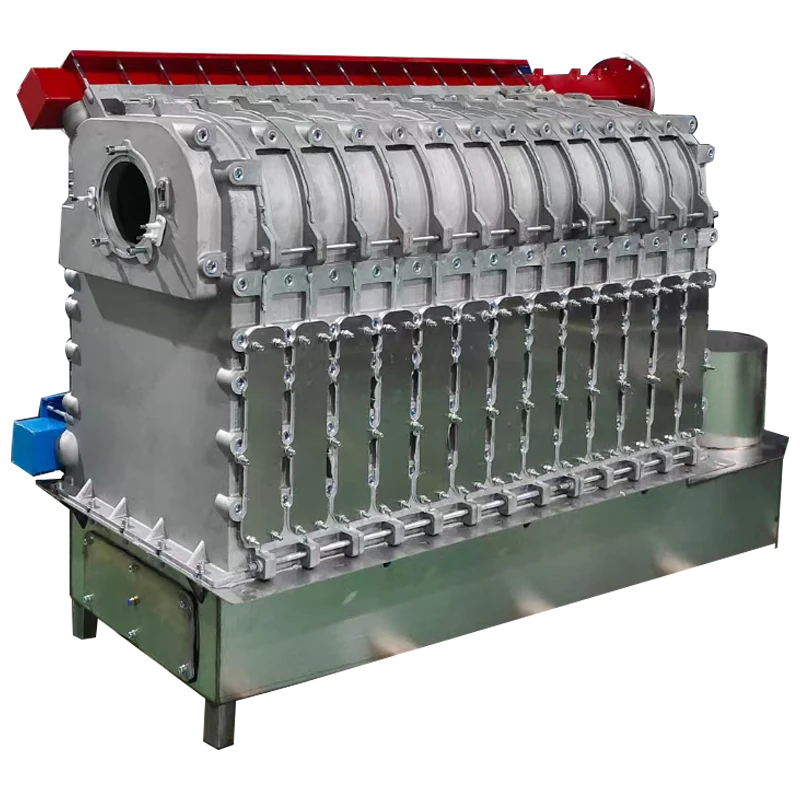Nov . 05, 2024 22:16 Back to list
Sizing and Selection of Shell and Tube Heat Exchangers in Industrial Applications
Sizing Shell and Tube Heat Exchangers A Comprehensive Guide
In industrial applications, heat exchangers play a critical role in maintaining efficiency across various processes. Among the various types, shell and tube heat exchangers are widely used due to their robust design and versatility. Proper sizing of these heat exchangers is crucial to ensuring optimal performance, energy savings, and process reliability. This article delves into the key considerations in sizing shell and tube heat exchangers, focusing on the parameters that need to be evaluated for effective design.
Understanding Shell and Tube Heat Exchangers
Shell and tube heat exchangers consist of a series of tubes, one set carrying the hot fluid and the other carrying the cold fluid. The design allows for efficient heat transfer between the two fluids while maintaining their separation. Typically, these exchangers are utilized in processes involving heating, cooling, and condensing fluids, making them essential in industries such as chemical manufacturing, oil refining, and power generation.
Key Factors in Sizing
1. Thermal Design Requirements The first step in sizing a shell and tube heat exchanger is to establish the thermal performance requirements. This involves determining the heat transfer rate, temperature change, and fluid properties (specific heat, density, and viscosity) for both the hot and cold fluids.
2. Heat Transfer Coefficient The overall heat transfer coefficient (U) is a vital parameter in sizing. It depends on multiple factors, including fluid properties, flow characteristics (laminar or turbulent), and fouling factors. Accurate calculation of the heat transfer coefficients for both shell-side and tube-side fluids is essential to ensure optimal design.
3. Flow Arrangement The flow arrangement—counterflow, parallel flow, or crossflow—affects the heat exchanger's efficiency and performance. Counterflow arrangements typically yield the highest efficiency, as the temperature difference between the two fluids is maximized.
4. Size Constraints The physical dimensions of the heat exchanger must also be considered. Available space, mounting requirements, and logistics for installation and maintenance can influence the size of the shell and tube heat exchanger. A balance must be struck between efficiency and practicality concerning size constraints.
5. Pressure Drop Considerations Every heat exchanger will have an associated pressure drop due to fluid friction and turbulence. Designers must account for this pressure drop to ensure that the system will operate within acceptable limits. Excessive pressure drop can lead to operational inefficiencies and increased operational costs.
sizing shell and tube heat exchanger

6. Material Selection The choice of materials for the shell and tube heat exchanger is critical, particularly regarding the working fluids involved and the operating conditions (temperature and pressure). Appropriate material selection can enhance durability and reduce the risk of corrosion or fouling.
7. Fouling Factors Over time, heat exchangers can accumulate deposits that reduce their efficiency. It is crucial to include fouling factors in the initial design to account for potential decreases in heat transfer efficiency over time. Regular maintenance schedules and cleaning protocols can significantly enhance the longevity of the heat exchanger.
Sizing Calculations
The heat transfer area required for the heat exchanger can be calculated using the following formula
\[ Q = U \times A \times \Delta T_{lm} \]
Where - \( Q \) = heat transfer rate (W) - \( U \) = overall heat transfer coefficient (W/m²K) - \( A \) = heat transfer area (m²) - \( \Delta T_{lm} \) = logarithmic mean temperature difference (°C)
After determining the heat transfer area, a selection of tube diameter, length, and number of tubes is required, ensuring that the design meets both thermal and hydraulic requirements.
Conclusion
Proper sizing of shell and tube heat exchangers is a complex but essential process that involves meticulous calculations and considerations. By focusing on thermal requirements, flow arrangements, material selections, and pressure drop calculations, engineers can design efficient and reliable heat exchangers suited to specific industrial applications. With the right design and regular maintenance, shell and tube heat exchangers can provide significant energy savings and prolonged operational efficiency. Understanding these principles is vital for any engineer or designer involved in thermal systems.
-
Durable Centrifugally Cast Iron Water Main Pipe
NewsAug.11,2025
-
Centrifugally Cast Iron Water Main Pipes for Reliability
NewsAug.10,2025
-
High-Quality Centrifugally Cast Iron Water Main Pipes
NewsAug.09,2025
-
Durable Cast Iron Water Main Pipe & Drainage Solutions
NewsAug.08,2025
-
Buy Cast Iron Pipe: Premium Ductile Iron & Drain Solutions
NewsAug.07,2025
-
Durable Cast Iron Water Main Pipe | Buy Ductile Pipe
NewsAug.06,2025


